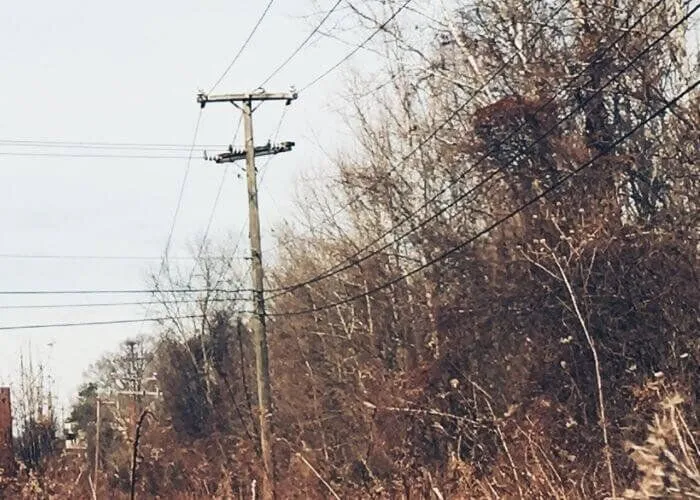
China ADSS Fiber Optic Cable Manufacturer
We’re ADSS Fiber Optic Cable Manufacturer located in China. Specializing in the design, production, and export of top-quality All-Dielectric Self-Supporting (ADSS) fiber optic cables. Offering a wide range of products tailored to meet the diverse needs of telecommunications networks, including long-span, high-capacity, and harsh environment solutions.

Our ADSS Fiber Optic Cables
ADSS fiber optic cables are a popular choice, but the best option can vary depending on your specific needs. For instance, many customers in Brazil prefer the ASU80 and ASU120 models. If you’re considering these cables for your project, our experienced team can provide expert guidance.
Custom ADSS Fiber Optic Cable

Our Custom ADSS Fiber Optic Cable service provides flexible and reliable connectivity for aerial installations. We offer a wide range of customization options to meet your specific project requirements, including: fiber count, cable diameter, strength member and jacket material, etc.
Benefit from our expertise in designing and manufacturing ADSS cables to ensure optimal performance and longevity. Contact us to discuss your project and explore our custom ADSS fiber optic cable solutions.
Applications for ADSS Fiber Optic Cable
ADSS fiber optic cables are increasingly used in a variety of settings, including power line communication systems and communication lines in areas prone to thunder, lightning, and other harsh overhead conditions.

High-voltage power lines

Large-span overhead laying

Lightning-prone areas
ADSS Fiber Optic Cable: A Comprehensive Guide
1. What is ADSS Fiber Optic Cable?
ADSS, which stands for All-Dielectric Self-Supporting, is a type of fiber optic cable designed for aerial installation without the need for supporting metallic hardware. Unlike traditional fiber optic cables that require additional support structures, ADSS cables have a strong dielectric core that enables them to withstand their own weight and external loads. This makes them ideal for applications in power line corridors, rural areas, and other locations where traditional cable installation is challenging or impractical.
2. How Can ADSS Fiber Optic Cable Achieve Great Performance?
ADSS fiber optic cables excel due to their unique design and construction:
- Dielectric Core: The core of the cable is made from non-conductive materials, providing excellent electrical insulation and resistance to electromagnetic interference (EMI).
- High Tensile Strength: The cable’s construction incorporates high-strength materials, allowing it to withstand the stresses of aerial installation and environmental conditions.
- Light Weight: ADSS cables are significantly lighter than traditional fiber optic cables, reducing installation efforts and load on supporting structures.
- Flexible Design: ADSS cables can be designed to accommodate various fiber counts and cable diameters, making them versatile for different applications.
3. What are the Applications of ADSS Fiber Optic Cable?
ADSS fiber optic cables find widespread use in various industries:
- Power Utilities: For communication between substations, remote monitoring, and SCADA systems.
- Telecommunications: In rural areas and for long-haul networks where overhead installation is preferred.
- Oil and Gas: For pipeline monitoring, remote control, and data transmission.
- Transportation: For traffic management, surveillance, and communication systems.
4. What are the Advantages of ADSS Fiber Optic Cable?
- Easy Installation: ADSS cables can be quickly and easily installed on existing structures, reducing installation costs and time.
- High Reliability: The dielectric core provides excellent protection against electrical interference, ensuring reliable data transmission.
- Long Service Life: ADSS cables are designed to withstand harsh environmental conditions, extending their lifespan.
- Safety: The absence of metallic components reduces the risk of electrical hazards.
- Cost-Effective: Over time, the reduced maintenance and installation costs make ADSS cables a cost-effective solution.
5. What are the Types of ADSS Fiber Optic Cable?
ADSS cables can be classified based on different parameters:
- Fiber Count: Cables can accommodate varying numbers of fibers to meet different bandwidth requirements.
- Core Diameter: Single-mode and multi-mode fibers can be used depending on the transmission distance and data rate.
- Jacket Material: Different jacket materials offer varying levels of protection against environmental factors.
- Strength Member: The type of strength member used affects the cable’s overall strength and flexibility.
6. What are the Materials for ADSS Fiber Optic Cable?
ADSS cables primarily consist of the following materials:
- Fiber: Glass or plastic fibers for light transmission.
- Buffer Tube: Protects the fibers from external stresses.
- Central Strength Member: Provides structural support to the cable.
- Water-Blocking Material: Prevents water ingress and protects the fibers.
- Outer Jacket: Protects the cable from environmental factors.
By understanding the characteristics and benefits of ADSS fiber optic cable, you can make informed decisions for your specific application and enjoy the advantages of this versatile and reliable technology.







